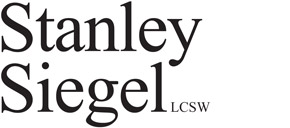During the mid- 1990âs I served as Dance Editor for Showbusiness and wrote weekly dance reviews and reported on the dance scene in New York City
Performing Arts Youth Ballet
By Stanley R. Siegel
âLe Papillonâ (1991), âAllongerâ (1991), âDeconstructionâ (1991)
The opening moments of the Performing Arts Youth Balletâs inaugural performance, aroused immediate feelings of excitement. This fledgling company, selecting its young performers from the diverse ethnic and racial groups that represent our melting pot city, presented an inspiriting evening of classical and contemporary ballet. For those who frequent the ballet, the high level of technical artistry demonstrated by these young people served only as the first surprise.
In a city where dance performance abounds, there are few outlets for well-trained ballet students of high school age. The Performing Arts Youth Ballet was formed under the leadership of artistic director Michelle Benash and Joey R. Smith, âto give its young members the experience of performing within the creative and expressive context of a pre-professional company.â
The company performed newly choreographed ballets by Benash and Smith and divertissements from the classical repertoire featuring principal guest artists Susan Jaffe, Victoria Rinaldi, Simon Dow and Guillaume Graffin.
Smith took yet another leap. He used the romantic vocabulary in choreographing âLe Papillon,â incorporating the existing pas de deux created by Marie Taglioni. At a time when most choreographers are racing past the classics to find their own signature, Smith stopped and payed homage to the tradition. One can sense the conviction and struggle in his small, exquisitely drawn study of romanticism. He knows the romantic palette; softened forms, etherial themes, transcendent emotion and makes no clever comments on its limitations, creates no new visual vocabulary. Instead, he affectionately recapitulates, showing us how past images can speak to the present.
Interpreting Jacque Offenbackâs score, the ballet tells the story of a manâs quest to capture spiritual freedom. Impassioned by the beauty and freedom of the butterfly, the protagonist enters into a series of chases, then enchantments that eventually allow him to transcend the physical plane. With its 19th-century theme and temperament, foreign and inaccessible to the mod culture of the companyâs young dancers, the ballet provided a parallel experience through which the dancers, like the protagonist, were visibly transformed. Though few possess the bodies that attain the balletic ideal, their natural beauty was shaped by strict adherence to the classical vocabulary, without the choreographer compromising a single standard. The consequence was inspiring.
The subtlety of terminator electronic cigarette Smithâs accomplishment was further demonstrated by the distinguishing language of each variation. The quick piqueâ movements measuring the flight of the butterfly in the first solo, the smooth and flowing movements of the pas de quatre danced to a waltz, the rapidly darting steps of the female pas de deux, symbolic of the busywork of the butterflies, did not pale to the choreography of the grand pas de deux created by Tagliano in the late 1800âs. The same detail to the combination of steps and phrasing maintained the authenticity of the original romantic ideal.
With guest artists Rinaldi and Dow performing the principal roles and company members as soloists and the corps the ballet, choreographer Smith created a context that compelled us to view the aspiring and accomplished by the same high standards. Everyone measured up exquisitely.
âLe Corsaire Pas de Deus,â impeccably danced by Jaffe and Graffin and a hot-blooded version of âCarmen Pas de Deux,â performed by Rinaldi and Dow, perfectly segued the eveningâs two-time references. Under the direction of Benash, the latter part of the performance showcased two solidly crafted contemporary ballets, each with plotless choreography, both dances having sprung from pure emotion.
Where Benashâs âAllonger,â poetically expresses the universal struggle toward self-fulfillment, âDeconstructionâ celebrates youth exuberance. The dancers didnât simply dance, they were propelled by energy. Joining together in groups and then bursting apart, they struck imaginative patterns like those seen through the window of a kaleidoscope. There was no nostalgia here. The action was uplifting; sauteâ, arabesque, sauteâ, arabesque, climbing towards the future.
The opening movement established the choreographyâs clean line and phrasing. Dancers moved alone, or in flocks, doing the same steps or at counterpoint. The structure seemed very classical, though the images were strikingly modern; abstract rather than thematic, evocative rather than literal. Cleverly costumed, bodies were divided by black and white, with the tall ones cut waistwise and the smaller ones lengthwise. The stage composition appeared highly stylized.
The third movement ushered in a pas de trois. Each dancer entered alone, the three danced together and each left alone, a phrasing that was performed with particular elegance by Mathew Neenan, Leticia Roman and Ayla Yavin.
But the vibrant execution of the final movement; the vitality of its swift and hardy steps, its broad and seeping gestures, emphatically revealed the meaning of the evening. Everyday lives can be transformed by dancing and the boundaries of ballet transformed by the beauty, optimism and conviction of youth.




